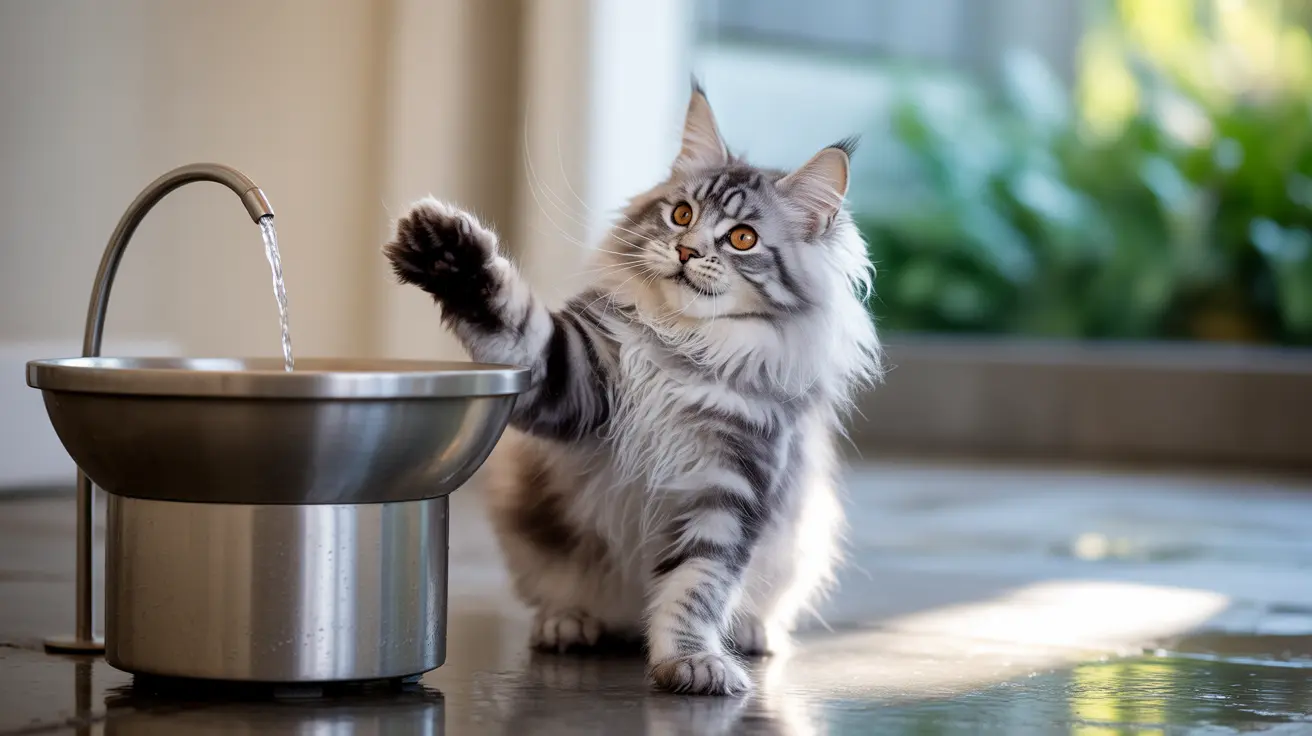Recognizing dehydration in cats early can be the difference between a minor health issue and a serious emergency. As natural masters of hiding illness, cats often don't show obvious signs of dehydration until the condition becomes severe. This comprehensive guide will help you understand, identify, and prevent dehydration in your feline companion.
Whether you're a new cat owner or an experienced pet parent, knowing the subtle signs of dehydration can help you protect your cat's health and well-being. Let's explore the key indicators and learn how to keep your cat properly hydrated.
Key Signs of Dehydration in Cats
The Skin Elasticity Test
One of the most reliable ways to check for dehydration is the skin elasticity or "tent" test. Gently pinch and lift the skin between your cat's shoulder blades. In a well-hydrated cat, the skin should quickly snap back into place. If the skin remains tented or returns slowly, your cat may be dehydrated.
Checking the Gums
Healthy cats have moist, pink gums. If your cat's gums feel sticky or tacky to the touch, this could indicate dehydration. Press your finger against the gums until they turn white, then release. The pink color should return within 1-2 seconds in a properly hydrated cat.
Common Causes of Feline Dehydration
Several factors can lead to dehydration in cats:
- Insufficient water intake
- Excessive heat exposure
- Illness or fever
- Kidney disease
- Diabetes
- Persistent vomiting or diarrhea
Prevention Strategies
Water Access and Diet
Ensure your cat always has access to fresh, clean water. Consider using cat water fountains, as many cats prefer moving water. Feeding wet food can significantly increase your cat's moisture intake, as it contains 70-80% water compared to just 10% in dry food.
Environmental Considerations
Keep your home at a comfortable temperature and provide multiple water stations throughout the house. Place water bowls away from food dishes, as cats instinctively avoid water near their food sources in the wild.
When to Seek Veterinary Care
Immediate veterinary attention is necessary if you notice:
- Severe lethargy or weakness
- Refusal to eat or drink for 24+ hours
- Sunken eyes
- Persistent skin tenting
- Dry, tacky gums
- Increased heart rate or panting
Frequently Asked Questions
What are the most common signs of dehydration in cats that I can check at home?
The most reliable signs include skin tenting (reduced elasticity), tacky or dry gums, sunken eyes, lethargy, and decreased appetite. You can also monitor your cat's litter box habits, as decreased urination or darker urine can indicate dehydration.
How do I perform the skin tent test to see if my cat is dehydrated?
Gently pinch and lift the skin between your cat's shoulder blades, then release it. In a well-hydrated cat, the skin should immediately return to its normal position. If the skin remains raised or returns slowly, this suggests dehydration.
Why do cats lose their appetite and become lethargic when dehydrated?
Dehydration affects blood circulation and organ function, leading to feelings of nausea and weakness. This naturally reduces appetite and energy levels as the body tries to conserve resources and maintain essential functions.
How can I prevent dehydration in cats, especially if they mainly eat dry food?
Add wet food to their diet, provide multiple water sources including fountains, and consider mixing water into their dry food. You can also encourage drinking by flavoring water with low-sodium chicken broth or tuna juice.
When should I take my cat to the vet for dehydration symptoms?
Seek immediate veterinary care if your cat shows severe lethargy, refuses food and water for over 24 hours, has persistent skin tenting, or displays symptoms like vomiting or diarrhea alongside signs of dehydration.
Conclusion
Staying vigilant about your cat's hydration status is crucial for their health and well-being. By understanding the signs of dehydration and implementing preventive measures, you can help ensure your cat maintains proper hydration levels. When in doubt, always consult with your veterinarian, as they can provide personalized advice and treatment options for your specific situation.






